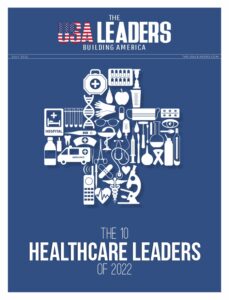Did you know that the GDP from agriculture in the US increased to $219.40 billion in the first quarter of 2023? Additionally, U.S. agricultural exports for fiscal year (FY) 2023 are projected to reach $184.5 billion.
If you’re interested in learning more about the agricultural industry in the US, you’ve come to the right blog post. In this blog, we will thoroughly explore the US agricultural sector.
The State of Agriculture in the US
Currently, the U.S. agricultural gross domestic product is projected to reach $173 billion by 2026, growing annually by 0.6% since 2021.
In 2023, the gross production value in the U.S. agriculture market is expected to hit $298.30 billion.
Over the next decade, North America is expected to maintain its position as the world’s second-largest agricultural exporter. However, robust domestic consumption growth is anticipated to reduce its net export position slightly.
The agriculture industry in the region may play a significant stabilizing role by increasing production to normalize high-price cycles.
Major crops grown in the country include corn, soybeans, wheat, cotton, barley, and oats.
Here’s a breakdown of crop statistics:
Corn: The U.S. is expected to account for 23% of global exports during the harvest year.
Soybean: The U.S. anticipates a record-breaking 122.74 million metric tons of soybeans to be grown, with a good harvest predicted for this year.
Wheat: All-wheat exports for the United States in 2023/24 are projected to reach 700 million bushels.
Cotton: U.S. cotton exports are forecasted at 14 million bales in 2023/24, nearly 8% above 2022/23 but still among the lowest levels in recent years.
Barley: Barley’s estimated production for 2023–24 is 4.5 million tons, 800,000 tons lower than the official USDA estimate.
Oats: In May 2023, the United States’ oats exports amounted to $1.03 million.
The primary livestock raised in the country include cattle, sheep, lambs, pigs, and poultry.
- Corn-planted acreage in the U.S. increased by 6% from 2022.
- Soybean Acreage decreased by 5%.
- All Wheat Acreage saw a 9% increase.
- All Cotton Acreage decreased by 19%.
Here’s a breakdown of the livestock sector.
Cattle:
Slower cattle sales in the second half of 2023 are predicted to result in a 180 million pound drop in meat production, partially offset by increased cow slaughtering. This shift will move some sales from late 2023 to 2024, increasing production by 465 million pounds in 2024. Beef imports for Q2 2023 have decreased, and cattle prices for 2023 and 2024 have been adjusted based on current prices. For dairy, predictions for farm milk output in 2023 and 2024 are lower.
Sheep/lamb:
Predictions for U.S. sheep and lamb meat imports and exports have been reduced in a recent report. This change is attributed to consistently high lamb prices in the market, leading experts to expect continued high prices.
Pigs:
In July, U.S. pork production increased by 2%, driven by higher slaughter rates despite lighter pig weights. Pork prices have risen since June, benefiting producers, while packer profits have expanded due to wider packer spreads. There has been a notable increase in male and female pig slaughters, which may signal a reduction in breeding herds due to poor industry returns. U.S. pork exports surged by 10% in June, with Q2 2023 showing an 11% increase. The U.S. is gaining ground in Asian markets due to its competitive prices compared to European pork. Predictions suggest continued growth in pork exports, with 2023 expected to be 9% higher than the previous year, and 2024 exports slightly higher than this year.
Poultry:
Expectations for lower chicken meat production in 2023 and 2024 are due to oversupply, resulting in falling prices and a potential slowdown in the industry. Chicken exports are down, imports are up (especially from Chile), and chicken prices have decreased. Egg production is also down due to a smaller number of baby chickens for egg-laying. Turkey’s production and exports have increased, but turkey prices have decreased because of greater availability at lower prices recently.
Technological Advancements in the Agriculture in the US
Here are some of the top technological advancements in agriculture in the US.
Drones: In recent years, drones have found increased utility in the precise and efficient monitoring of crop health, pest, and disease diagnosis, as well as pesticide and fertilizer application. Additionally, they are employed in animal husbandry for monitoring grasslands and tracking animal movement on large farms. Notably, some drones are equipped with thermal imaging cameras to identify sick animals with elevated body temperatures. This ability to provide farmers with comprehensive data for making rapid decisions constitutes one of their inherent advantages.
Autonomous Tractors: Autonomous tractors operate continuously, boosting food production speed. They perform tasks traditionally done by humans, cutting labor costs and freeing up time for other projects. Equipped with sensors, they avoid accidents and excel in precision, potentially increasing yields and reducing waste. These tractors also curb pollution and fuel use, primarily in dairy, grain, and row farms.
Smart Irrigation Systems: To enhance water conservation, farmers can employ smart irrigation systems. These systems utilize sensors and data analytics to determine the precise timing and quantity of water needed for crops. Consequently, they boost crop yields, reduce labor and water expenses, and extend the lifespan of irrigation equipment by minimizing wear and tear. Moreover, they play a vital role in promoting environmental sustainability by reducing runoff and mitigating water pollution.
VRT: Variable-rate technology is a precision agriculture tool that allows farmers to precisely adjust the application of agricultural inputs, such as fertilizer, herbicides, and seeds, to match the specific requirements of both the crop and the soil. For example, corn producers utilize VRT to vary the application rates of fertilizer and insecticides based on factors like soil type and field elevation. Similarly, soybean growers employ VRT to adapt seed application rates according to soil type and the preceding crop, etc.
Precision Livestock Farming: Precision Livestock Farming (PLF) is a management strategy that utilizes sensors and data analytics to monitor and control individual animals. This approach facilitates early diagnosis and treatment of sick animals, preventing them from endangering the health of the entire herd. Furthermore, by streamlining feeding and production methods, PLF enhances output and profitability.
Dairy farmers use PLF to track milk production and identify disease-prone animals, while beef ranchers employ it to monitor weight gain and identify slow-developing animals.
Crop Diversity Across States
Over 300 commercial crops grow in the USA. The most common crops include corn, soybeans, wheat, cotton, rice, hay, and fruits and vegetables.
Here are some examples of the crop diversity in the USA.
Midwest: The Midwest, often referred to as the breadbasket of the United States, plays a pivotal role in the nation’s agriculture. In 2022, this region was responsible for a substantial share of corn and soybean production, accounting for 90% and 83% respectively. Midwest farmers also cultivate a diverse array of crops, such as wheat, oats, barley, alfalfa, and sunflowers. In that same year, the Midwest contributed significantly to the national production of these crops, with 67% of the wheat, 53% of the oats, 55% of the barley, 92% of the alfalfa, and 96% of the sunflowers in the United States originating from this region.
South: The United States’ main cotton-producing region, known as the Cotton Belt, is situated in the South. In 2022, around 95% of the nation’s cotton came from this area. Additionally, Southern farmers cultivate various other crops, including peanuts, soybeans, wheat, and rice. In that same year, the South accounted for 67% of the nation’s peanut production, 17% of its soybean production, 25% of its wheat production, and all of its rice production.
West: In the Western United States, farmers cultivate a wide variety of crops, including fruits, vegetables, alfalfa, rice, and cotton. This region boasts diverse climates and soil types. Notably, in 2022, the West played a significant role in the nation’s agricultural production, contributing 40% to US fruit production, 43% to US vegetable production, 50% to US alfalfa production, 9% to US rice production, and 5% to US cotton production.
Challenges Faced by Farmers
Some of the challenges faced by farmers in modern agriculture in the US are as follows:
Climate Changes: Climate change is significantly impacting farmers in multiple ways. Extreme weather events, such as droughts, excessive heat, floods, and windstorms, along with the depletion of soil and water resources, are making farming more challenging and costly. Moreover, the scarcity of pollinators compounds these challenges for farmers in crop cultivation and animal care.
Rising Input Costs: Rising input costs, encompassing expenses for fuel, fertilizer, and seeds, have surged recently due to various factors. These include:
- Demand Growth: The global demand for food has steadily increased, driving up agricultural input prices.
- Supply Chain Disruptions: Notably, the COVID-19 pandemic and the conflict in Ukraine have severely disrupted supply chains, further escalating input costs.
- Rising Energy Prices: Additionally, the recent spike in energy prices has contributed to the upward trend in agricultural input prices.
Low Labour Force: In the United States, the average age of farmers is rising, with fewer younger individuals entering the industry as older farmers retire. Moreover, industries like manufacturing and construction offer higher pay and better benefits than agriculture. Consequently, the U.S. government has imposed more obstacles on foreign laborers seeking to work on American farms, leading to a decrease in the available labor pool.
Trade Disputes: Trade disputes with other nations have led to the imposition of specific tariffs on US agricultural products. Consequently, farmers are facing increased challenges in marketing their goods, and as a result, they are experiencing reduced profitability, potentially leading to higher food costs.
It will be interesting to see how the US govt. tackles these problems as they have a major impact on agriculture in the US.
In conclusion, agriculture in the US encounters challenges; however, it also prospers through technological advancements and regional diversity. To ensure a promising future for American agriculture, it is essential to support farmers, embrace sustainability, and harness technology.
ALSO READ: 10 Biggest states in the USA driving the Economy Forward






















